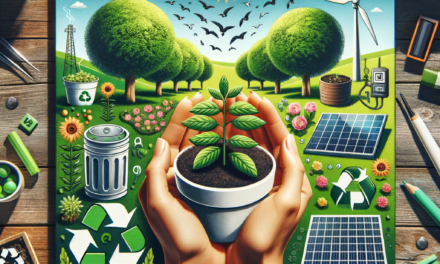As stewards of the Earth, we all play a pivotal role in protecting our planet’s precious resources. For women who are passionate about health and wellness, understanding the connection between the environment and personal well-being is crucial. Ocean conservation is not just about safeguarding marine life; it’s about ensuring the health of our planet for future generations. The ocean provides a significant portion of the oxygen we breathe, regulates climate, and supports a biodiversity that is essential for the global ecosystem.
Engaging in ocean conservation can be a fulfilling way to enhance your own wellness while contributing to a greater cause. As we transition into the warmer seasons, when beach visits become more frequent and marine life is often more active, it’s the perfect time to focus on protecting our oceans. Here’s a step-by-step guide on how you can get involved in ocean conservation and make a positive impact on marine life.
Step 1: Educate Yourself and Others
Knowledge is power. Begin by learning about the ocean’s ecosystems, the threats they face, and the importance of marine life to our world. Share this knowledge with friends, family, and your community. Hosting educational workshops or movie nights featuring documentaries about the ocean can be a great way to spread awareness.
Step 2: Reduce Your Carbon Footprint
Climate change is a significant threat to marine life. You can help by reducing your carbon footprint. Simple actions like using public transportation, reducing energy consumption at home, and supporting renewable energy initiatives can make a difference.
Step 3: Adopt Sustainable Seafood Practices
Overfishing is depleting fish populations and damaging marine ecosystems. Choose sustainable seafood options and support local, eco-friendly fisheries. Apps and guides are available to help you make responsible seafood choices.
Step 4: Minimize Plastic Use
Plastics are a major pollutant in our oceans, harming marine life and ecosystems. Reduce your plastic consumption by using reusable bags, bottles, and containers. Participate in or organize local beach clean-ups to remove plastic waste from the marine environment.
Step 5: Support Marine Protected Areas
Marine Protected Areas (MPAs) are regions of the ocean where human activity is regulated to preserve natural resources. Advocate for the establishment and enforcement of MPAs by signing petitions, writing to your government representatives, and supporting organizations that work towards this goal.
Step 6: Get Involved with Conservation Organizations
Join or volunteer with organizations dedicated to ocean conservation. Whether it’s participating in research, education, or advocacy, your contribution can make a substantial impact.
Step 7: Use Your Voice and Vote
Policy change is crucial for large-scale environmental impact. Stay informed about legislation that affects the ocean and marine life, and use your voice and vote to support eco-friendly policies.
In conclusion, ocean conservation is a powerful way to align your wellness journey with environmental activism. By taking these steps, you not only contribute to the health of our oceans but also to your own sense of purpose and well-being. Remember, every action counts, and your involvement can inspire others to join the cause. Together, we can protect our oceans and ensure a healthier planet for all.










